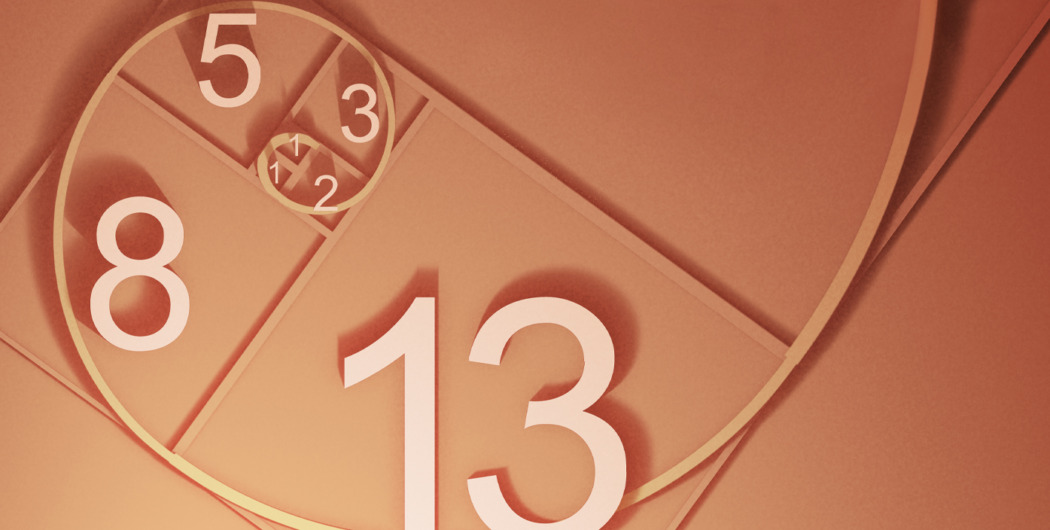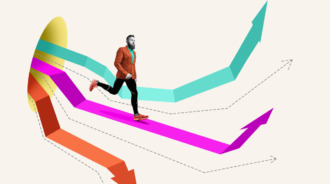

Fibonacci retracement and extension are popular tools used to determine support and resistance levels. Before Leonardo Fibonacci introduced them to Europe, the Fibo numbers and their sequences were developed by Indian mathematician Acarya Virahanka around 600 AD.
Fibo levels determine price pullbacks within a solid trend and trend reversals. Although the indicators consist of lines only, many traders draw them wrong and think they don’t work. In this article, you will learn how to draw Fibonacci levels correctly.
How to draw Fibonacci retracements
The Fibonacci retracement tool is used to determine how deep a retracement within a current trend can be. This means that retracements measure price pullbacks within a trend.
The Fibonacci retracement consists of a line that connects a pick and low of a trend and the levels, including 0%, 23.6%, 38.2%, 50%, 61.8%, 78.6%, and 100%. 0% and 100% stand for the highest and the lowest points of the trend. 23.6%, 38.2%, 61.8%, and 78.6% are considered the golden ratio. They are essential for identifying price pullbacks. 50% is considered a psychological level.
How to draw the lines
- Choose “Fibonacci retracement” on the trading platform you use. It’s a standard technical tool.
- Find the highest and the lowest points of the current trend. If it’s an uptrend, draw the Fibo line from bottom to top. If it’s a downtrend, draw the line from top to bottom.
- If you draw it correctly, the 0% will be located on the top in an uptrend and on the bottom in a downtrend.
How to draw Fibonacci extensions
Extensions are used to forecast the direction the price will move after a retracement. It measures the impulse waves within the current trend. The Fibo retracement tool is represented by two lines connecting a wave’s highs and lows.
How to draw the lines
- Choose “Fibonacci extension” among the trading tools.
- Here, you should look for price swings, not a trend. Every time a price forms a new swing, you can draw a Fibo extension. If it’s an uptrend, pick a low, set a second point on a near high, and connect it to a near low. In a downtrend, pick a high, connect it to a low, and lead the line to a near high.
- If you draw it correctly, the 0% will be located on a low in an uptrend and on a high in a downtrend.
Setting retracement grids
It can take a fair amount of skill to set a Fibonacci grid the right way. If you get the levels wrong, you may undermine its profitability and experience losses. This is because you are encouraging trading at prices that make little sense.
The entire process requires multi-grid placement. The successive points will be placed at shorter and longer timeframes, up to the moment when the perfect price range is captured. This usually happens when you hold onto an open position.
To set the grid, go to your weekly pattern and find out which one is the longest continuous downtrend or uptrend. If you find yourself in a downtrend, set the Fibonacci from high to low. On the other hand, if you are in an uptrend, the Fibonacci should be set from low to high.
The grid should display four retracement levels: .50, .329, .786, and .618. Usually, a Fibonacci retracement grid will work its best when it is part of a trending market. With that in mind, it can still provide a technical analysis of every market, showing you resistance levels and possible support.

Setting extension grids
Unlike retracement grids that only join two points, extension grids will join three of them. In an uptrend, Fibonacci extensions are created by joining the highest and lowest points, but also the low retracement (i.e., the pullback). In other words, to get this chart, you need to set the retracement grid first.
An extension grid will work best when you use trading ranges to build the ratios. There, you need a clear view of the breakout and the pullback levels. If you are in an uptrend, set the starting point of the extension grid at a swing low point. Extend it towards the high range, which is also the breakout level.
Once you set up this grid, you will see a second one showing up. This one should start from the breakout price, going higher from that point. Eventually, it should reach the Fibonacci ratio that will likely be used during the trade.
If the trend is downward, the process should be reversed. The starting point should be the swing going down to the breakout level. One click will create the grid, after which you will see the second grid appearing.
The grid should start at the breakdown price. From that point, it will stretch lower, until the Fibonacci ratio will come into the setting. When you are in a downside grid, you will likely use fewer ratios as compared to an upside grid. This happens because while extensions can go on toward infinity, they will never go any lower than zero.
The Value of formfitting
Retracement and extension grids can be difficult to make sense of, especially when it comes to the levels. This is why you should focus on the harmonics that will likely appear during the open position.
For example, a day trader will have no reason to care about yearly or monthly Fibonacci levels. That being said, discarding longer trades is also not a good decision. A trade that stays open for a few weeks can get to harmonic levels going back 5, 6, 7, or even 10 years. This often happens when it is positioned near a long-term level.
As a result, you should start formfitting so that you may align the grids closer to one another. Make sure they are close to features such as high/lows, gaps, or moving averages. Depending on the situation, you may also want to move the grid starting point to other levels, to see whether they fit better there or not.
Common mistakes when drawing retracements and extensions
There are common mistakes most traders make when dealing with Fibonacci retracements and extensions.
Old levels
New Fibo extensions should be placed on the chart every time the price forms a new wave. New Fibo retracements should be placed when the price forms a new trend or a new high/low within the current trend.
Trying to fit
A common mistake when drawing Fibo levels is to fit the Fibo levels with the price movements. Fibonacci levels determine support and resistance levels. Still, it’s normal if the price goes beyond them.
Trend reversal
Many traders expect the Fibo levels to show when a trend will turn around. Still, in most cases, the levels identify price reversals but can’t solely predict a change in the whole trend.
Relying on Fibo solely
There is no indicator that would provide perfect signals. Combine the tool with other indicators predicting price reversals, including RSI, MACD, Awesome Oscillator, and Stochastic.
Too many levels
Fibonacci levels work better on longer-term timeframes. As they have to be reset every time a price forms a new trend or a wave, there can be too many levels on low timeframes.
Takeaway
It’s a challenge to place Fibonacci levels on a price chart correctly. Before using this tool for trading, you should practice on different timeframes and multiple assets. A real market isn’t as perfect as it’s in a picture in a tutorial. Use a demo account to understand how to deal with Fibo levels.







